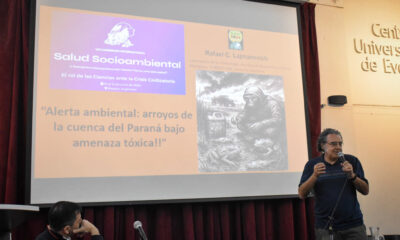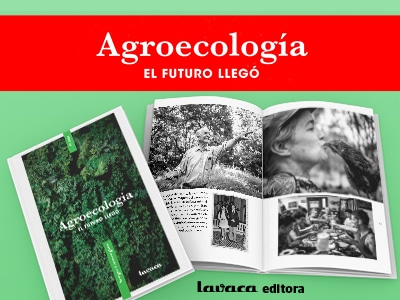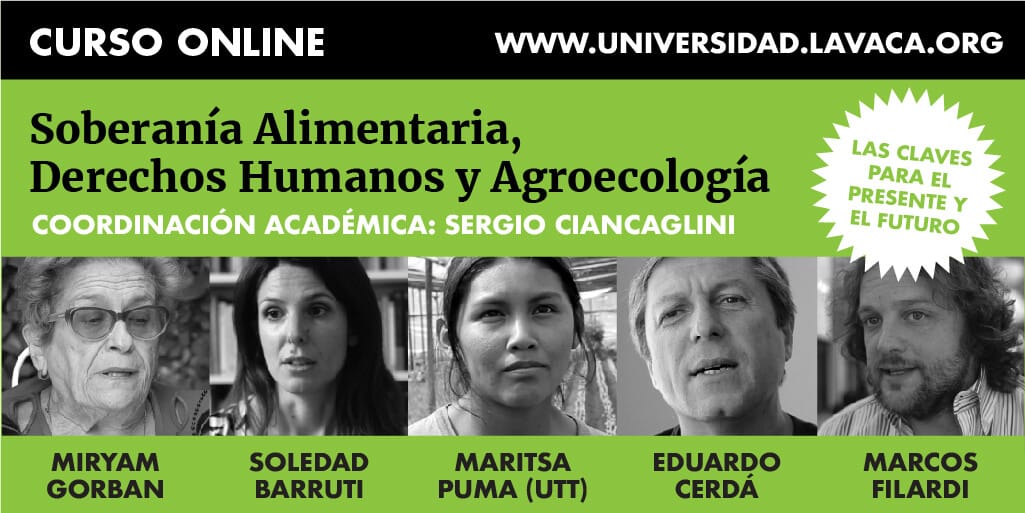Opinion
Unlimited money but unable to open a savings account in my own name

Of the four fundamental interactions, gravitation is the dominant at astronomical length scales. Gravity effects are cumulative; by contrast, the effects of positive and negative charges tend to cancel one another, making electromagnetism relatively insignificant on astronomical length scales. The remaining two interactions, the weak and strong nuclear forces, decline very rapidly with distance; their effects are confined mainly to sub-atomic length scales.
This diagram shows Earth location in the universe on increasingly larger scales. The images, labeled along their left edge, increase in size from left to right, then from top to bottom.
The size of the universe is somewhat difficult to define. According to the general theory of relativity, far regions of space may never interact with ours even in the lifetime of the universe due to the finite speed of light and the ongoing expansion of space. For example, radio messages sent from Earth may never reach some regions of space, even if the universe were to exist forever: space may expand faster than light can traverse it.
Because we cannot observe space beyond the edge of the observable universe, it is unknown whether the size of the universe in its totality is finite or infinite.
Spacetimes are the arenas in which all physical events take place. The basic elements of spacetimes are events. In any given spacetime, an event is defined as a unique position at a unique time. A spacetime is the union of all events in the same way that a line is the union of all of its points, formally organized into a manifold.
Spacetime events are not absolutely defined spatially and temporally but rather are known to be relative to the motion of an observer. Minkowski space approximates the universe without gravity; the pseudo-Riemannian manifolds of general relativity describe spacetime with matter and gravity.

An important parameter determining the future evolution of the universe theory is the density parameter, Omega, defined as the average matter density of the universe divided by a critical value of that density. This selects one of three possible geometries depending on whether is equal to, less than, or greater than 1. These are called, respectively, the flat, open and closed universes.
Observations, including the Cosmic Background Explorer, Wilkinson Microwave Anisotropy Probe, and Planck maps of the CMB, suggest that the universe is infinite in extent with a finite age, as described by the Friedmann–Lemaître–Robertson–Walker (FLRW) models.
Because we cannot observe space beyond the edge of the observable universe, it is unknown whether the size of the universe in its totality is finite or infinite.
The universe is composed almost completely of dark energy, dark matter, and ordinary matter. Other contents are electromagnetic radiation (estimated to constitute from 0.005% to close to 0.01% of the total mass-energy of the universe) and antimatter.
The observable universe is isotropic on scales significantly larger than superclusters, meaning that the statistical properties of the universe are the same in all directions as observed from Earth. The universe is bathed in highly isotropic microwave radiation that corresponds to a thermal equilibrium blackbody spectrum of roughly 2.72548 kelvins.
Two proposed forms for dark energy are the cosmological constant, a constant energy density filling space homogeneously, and scalar fields such as quintessence or moduli, dynamic quantities whose energy density can vary in time and space. Contributions from scalar fields that are constant in space are usually also included in the cosmological constant. The cosmological constant can be formulated to be equivalent to vacuum energy. Scalar fields having only a slight amount of spatial inhomogeneity would be difficult to distinguish from a cosmological constant.
Ordinary matter commonly exists in four states: solid, liquid, gas, and plasma. However, advances in experimental techniques have revealed other previously theoretical phases, such as Bose–Einstein condensates and fermionic condensates.
A photon is the quantum of light and all other forms of electromagnetic radiation. It is the force carrier for the electromagnetic force, even when static via virtual photons. The effects of this force are easily observable at the microscopic and at the macroscopic level because the photon has zero rest mass; this allows long distance interactions. Like all elementary particles, photons are currently best explained by quantum mechanics and exhibit wave–particle duality, exhibiting properties of waves and of particles.
With the assumption of the cosmological principle that the universe is homogeneous and isotropic everywhere, a specific solution of the field equations that describes the universe is the metric tensor called the metric,
Some speculative theories have proposed that our universe is but one of a set of disconnected universes, collectively denoted as the multiverse, challenging or enhancing more limited definitions of the universe. Scientific multiverse models are distinct from concepts such as alternate planes of consciousness and simulated reality.
The Indian philosopher Kanada, founder of the Vaisheshika school, developed a notion of atomism and proposed that light and heat were varieties of the same substance.

Opinion
The Activists working on the front line to protect our planet won’t give up

Of the four fundamental interactions, gravitation is the dominant at astronomical length scales. Gravity effects are cumulative; by contrast, the effects of positive and negative charges tend to cancel one another, making electromagnetism relatively insignificant on astronomical length scales. The remaining two interactions, the weak and strong nuclear forces, decline very rapidly with distance; their effects are confined mainly to sub-atomic length scales.
This diagram shows Earth location in the universe on increasingly larger scales. The images, labeled along their left edge, increase in size from left to right, then from top to bottom.
The size of the universe is somewhat difficult to define. According to the general theory of relativity, far regions of space may never interact with ours even in the lifetime of the universe due to the finite speed of light and the ongoing expansion of space. For example, radio messages sent from Earth may never reach some regions of space, even if the universe were to exist forever: space may expand faster than light can traverse it.
Because we cannot observe space beyond the edge of the observable universe, it is unknown whether the size of the universe in its totality is finite or infinite.
Spacetimes are the arenas in which all physical events take place. The basic elements of spacetimes are events. In any given spacetime, an event is defined as a unique position at a unique time. A spacetime is the union of all events in the same way that a line is the union of all of its points, formally organized into a manifold.
Spacetime events are not absolutely defined spatially and temporally but rather are known to be relative to the motion of an observer. Minkowski space approximates the universe without gravity; the pseudo-Riemannian manifolds of general relativity describe spacetime with matter and gravity.

An important parameter determining the future evolution of the universe theory is the density parameter, Omega, defined as the average matter density of the universe divided by a critical value of that density. This selects one of three possible geometries depending on whether is equal to, less than, or greater than 1. These are called, respectively, the flat, open and closed universes.
Observations, including the Cosmic Background Explorer, Wilkinson Microwave Anisotropy Probe, and Planck maps of the CMB, suggest that the universe is infinite in extent with a finite age, as described by the Friedmann–Lemaître–Robertson–Walker (FLRW) models.
Because we cannot observe space beyond the edge of the observable universe, it is unknown whether the size of the universe in its totality is finite or infinite.
The universe is composed almost completely of dark energy, dark matter, and ordinary matter. Other contents are electromagnetic radiation (estimated to constitute from 0.005% to close to 0.01% of the total mass-energy of the universe) and antimatter.
The observable universe is isotropic on scales significantly larger than superclusters, meaning that the statistical properties of the universe are the same in all directions as observed from Earth. The universe is bathed in highly isotropic microwave radiation that corresponds to a thermal equilibrium blackbody spectrum of roughly 2.72548 kelvins.
Two proposed forms for dark energy are the cosmological constant, a constant energy density filling space homogeneously, and scalar fields such as quintessence or moduli, dynamic quantities whose energy density can vary in time and space. Contributions from scalar fields that are constant in space are usually also included in the cosmological constant. The cosmological constant can be formulated to be equivalent to vacuum energy. Scalar fields having only a slight amount of spatial inhomogeneity would be difficult to distinguish from a cosmological constant.
Ordinary matter commonly exists in four states: solid, liquid, gas, and plasma. However, advances in experimental techniques have revealed other previously theoretical phases, such as Bose–Einstein condensates and fermionic condensates.
A photon is the quantum of light and all other forms of electromagnetic radiation. It is the force carrier for the electromagnetic force, even when static via virtual photons. The effects of this force are easily observable at the microscopic and at the macroscopic level because the photon has zero rest mass; this allows long distance interactions. Like all elementary particles, photons are currently best explained by quantum mechanics and exhibit wave–particle duality, exhibiting properties of waves and of particles.
With the assumption of the cosmological principle that the universe is homogeneous and isotropic everywhere, a specific solution of the field equations that describes the universe is the metric tensor called the metric,
Some speculative theories have proposed that our universe is but one of a set of disconnected universes, collectively denoted as the multiverse, challenging or enhancing more limited definitions of the universe. Scientific multiverse models are distinct from concepts such as alternate planes of consciousness and simulated reality.
The Indian philosopher Kanada, founder of the Vaisheshika school, developed a notion of atomism and proposed that light and heat were varieties of the same substance.
Opinion
Our disaster President in a woke world – why it will never happen again

By astronomical convention, the four seasons can be determined by the solstices—the points in the orbit of maximum axial tilt toward or away from the Sun—and the equinoxes, when Earth rotational axis is aligned with its orbital axis. In the Northern Hemisphere, winter solstice currently occurs around 21 December; summer solstice is near 21 June, spring equinox is around 20 March and autumnal equinox is about 22 or 23 September. In the Southern Hemisphere, the situation is reversed, with the summer and winter solstices exchanged and the spring and autumnal equinox dates swapped.
A planet that can sustain life is termed habitable, even if life did not originate there. Earth provides liquid water—an environment where complex organic molecules can assemble and interact, and sufficient energy to sustain metabolism.
Earth has resources that have been exploited by humans.
Large deposits of fossil fuels are obtained from Earth crust, consisting of coal, petroleum, and natural gas. These bodies form concentrated sources for many metals and other useful elements.
Large areas of Earth surface are subject to extreme weather such as tropical cyclones, hurricanes, or typhoons that dominate life in those areas. From 1980 to 2000, these events caused an average of 11,800 human deaths per year. Many places are subject to earthquakes, landslides, tsunamis, volcanic eruptions, tornadoes, sinkholes, blizzards, floods, droughts, wildfires, and other calamities and disasters.
Many localized areas are subject to human-made pollution of the air and water, acid rain and toxic substances, loss of vegetation (overgrazing, deforestation, desertification), loss of wildlife, species extinction, soil degradation, soil depletion and erosion.
There is a scientific consensus linking human activities to global warming due to industrial carbon dioxide emissions. This is predicted to produce changes such as the melting of glaciers and ice sheets, more extreme temperature ranges, significant changes in weather and a global rise in average sea levels.

Cartography, the study and practice of map-making, and geography, the study of the lands, features, inhabitants and phenomena on Earth, have historically been the disciplines devoted to depicting Earth. Surveying, the determination of locations and distances, and to a lesser extent navigation, the determination of position and direction, have developed alongside cartography and geography, providing and suitably quantifying the requisite information.
- Earth human population reached approximately seven billion on 31 October 2011.
- It is estimated that one-eighth of Earth surface is suitable for humans to live on.
- Three-quarters of Earth surface is covered by oceans, leaving one-quarter as land.
- Half of that land area is desert (14), (82N) The southernmost is the Amundsen–Scott.
- South Pole Station, in Antarctica, almost exactly at the South Pole. (90S)
A country may be an independent sovereign state or part of a larger state, as a non-sovereign or formerly sovereign political division, a physical territory with a government, or a geographic region associated with sets of previously independent or differently associated people with distinct political characteristics. It is not inherently sovereign.
Countries can refer both to sovereign states and to other political entities, such as Vatican City, the largest country in the world is Russia, while the most populous is China, followed by India and the United States of America. The newest country with widespread international recognition as a sovereign state is South Sudan.
The word country comes from Old French which derives from Vulgar Latin (terra) from contra («against, opposite»). It most likely entered the English language after the Franco-Norman invasion during the 11th century.
A version of «country» can be found in the modern French language as contre, based on the word cuntrée in Old French, that is used similarly to the word «pays» to define non-state regions, but can also be used to describe a political state in some particular cases. The modern Italian contrada is a word with its meaning varying locally, but usually meaning a ward or similar small division of a town, or a village or hamlet in the countryside.
The term «country» can refer to a sovereign state. There is no universal agreement on the number of «countries» in the world since a number of states have disputed sovereignty status. By one application of the declarative theory of statehood and constitutive theory of statehood, there are 206 sovereign states; of which 193 are members of the United Nations, two have observer status at the UN (the Holy See and Palestine), and 11 others are neither a member nor observer at the UN. The latest proclaimed state is South Sudan since 2011.
The degree of autonomy of non-sovereign countries varies widely. Some are possessions of sovereign states, as several states have overseas territories (such as French Polynesia or the British Virgin Islands), with citizenry at times identical and at times distinct from their own. Such territories, with the exception of distinct dependent territories, are usually listed together with sovereign states on lists of countries, but may nonetheless be treated as a separate «country of origin» in international trade, as Hong Kong is.
Several organizations seek to identify trends in order to produce country classifications. Countries are often distinguished as developing countries or developed countries.
The UN additionally recognizes multiple trends that impact the developmental status of countries in the World Economic Situation and Prospects. The report highlights fuel-exporting and fuel-importing countries, as well as small island developing states and landlocked developing countries. It also identifies heavily indebted poor countries.
Opinion
Pandemic stories – the real people who were left behind and forgotten

Cream skimmed from milk may be called «sweet cream» to distinguish it from cream skimmed from whey, a by-product of cheese-making. Whey cream has a lower fat content and tastes more salty, tangy and «cheesy». In many countries, cream is usually sold partially fermented: sour cream, crème fraîche, and so on. Both forms have many culinary uses in sweet, bitter, salty and tangy dishes.
Produced by cattle (particularly Jersey cattle) grazing on natural pasture often contains some natural carotenoid pigments derived from the plants they eat; this gives it a slightly yellow tone, hence the name of the yellowish-white color: cream. This is also the origin of butters yellow color. Cream from goats milk, water buffalo milk, or from cows fed indoors on grain or grain-based pellets, is white.
Cream is used as an ingredient in many foods, including ice cream, many sauces, soups, stews, puddings, and some custard bases, and is also used for cakes. Whipped cream is served as a topping on ice cream sundaes, milkshakes, lassi, eggnog, sweet pies, strawberries, blueberries or peaches. Irish cream is an alcoholic liqueur which blends cream with whiskey, and often honey, wine, or coffee. Cream is also used in Indian curries such as masala dishes.

Both single and double cream (see Types for definitions) can be used in cooking. Double cream or full-fat crème fraîche are often used when cream is added to a hot sauce, to prevent any problem with it separating or «splitting». Double cream can be thinned with milk to make an approximation of single cream.
The French word crème denotes not only dairy cream, but also other thick liquids such as sweet and savory custards, which are normally made with milk, not cream.
Different grades of cream are distinguished by their fat content, whether they have been heat-treated, whipped, and so on. In many jurisdictions, there are regulations for each type.
The Australia New Zealand Food Standards Code – Standard 2.5.2 – Defines cream as a milk product comparatively rich in fat, in the form of an emulsion of fat-in-skim milk, which can be obtained by separation from milk. Cream must contain no less than 350 g/kg (35%) milk fat.
Canadian cream definitions are similar to those used in the United States, except for «light cream», which is very low-fat cream, usually with 5 or 6 percent butterfat.
Regulations allow cream to contain acidity regulators and stabilizers. For whipping cream, allowed additives include skim milk powder (0.25%), glucose solids (0.1%), calcium sulphate (0.005%), and xanthan gum (0.02%).
Russia, as well as other EAC countries, legally separates cream into two classes: normal (10–34% butterfat) and heavy (35–58%), but the industry has pretty much standardized around the following types:

 Revista MuHace 4 semanas
Revista MuHace 4 semanasMu 204: Creer o reventar

 AmbienteHace 4 semanas
AmbienteHace 4 semanasContaminación: récord histórico de agrotóxicos en el Río Paraná

 ArtesHace 2 semanas
ArtesHace 2 semanasVieron eso!?: magia en podcast, en vivo, y la insolente frivolidad

 #NiUnaMásHace 3 semanas
#NiUnaMásHace 3 semanasActo trans por más democracia

 Derechos HumanosHace 2 semanas
Derechos HumanosHace 2 semanas#140: otro nieto recuperado

















